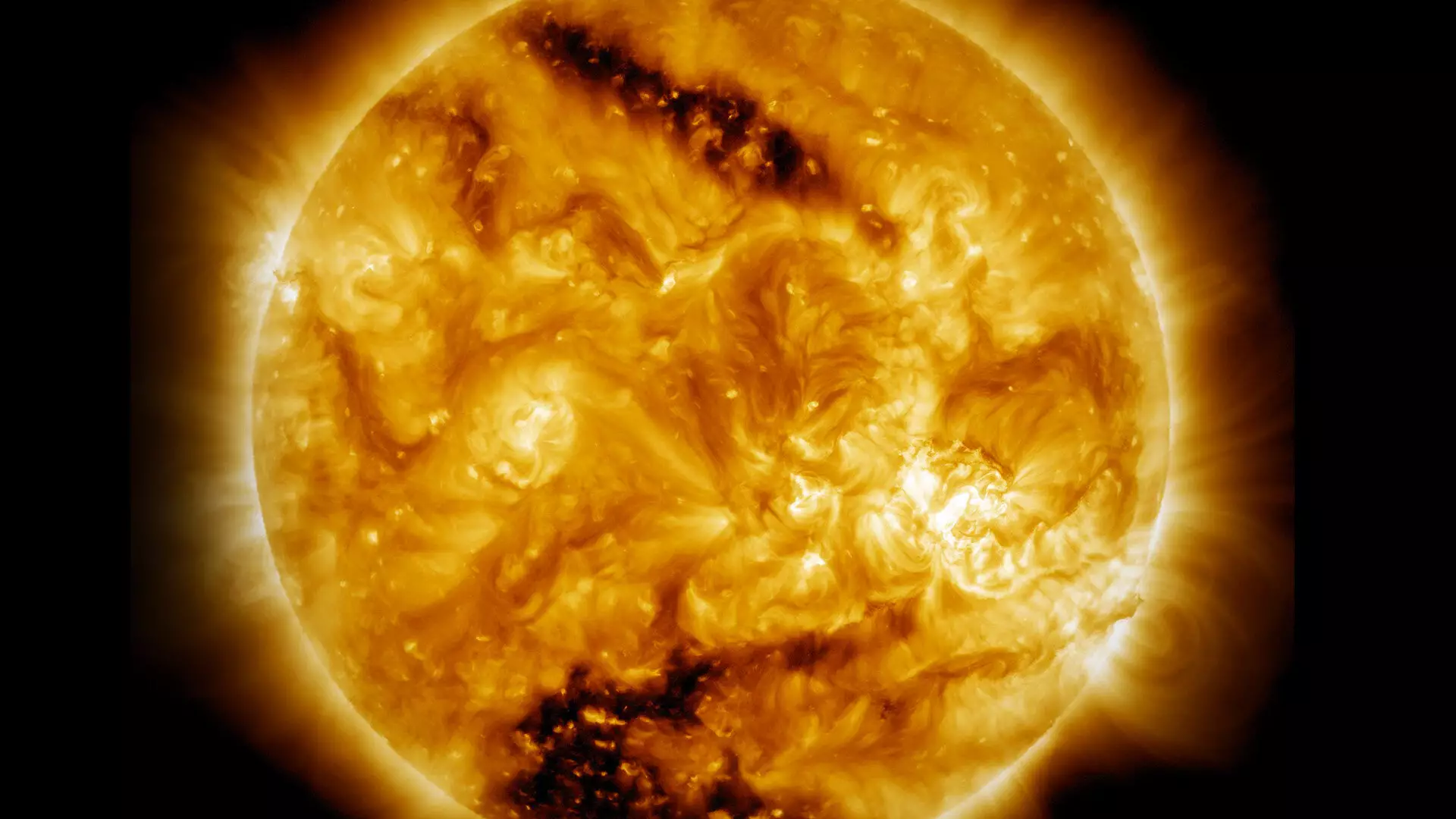The sun, a fiery ball of gas at the center of our solar system, presents an intriguing puzzle with its temperature dynamics. While the surface of the sun averages around 10,000 degrees Fahrenheit, a shocking temperature discrepancy arises when examining the outer atmosphere, known as the solar corona. This remarkable region soars to temperatures around 2 million degrees Fahrenheit, which is incomprehensibly hotter than the surface. Since this discrepancy was first identified in 1939, scientists have grappled with understanding why the solar corona is so much hotter than the photosphere. This contradiction forms one of the most captivating enigmas in solar physics.
Recent advancements led by Sayak Bose of the U.S. Department of Energy’s Princeton Plasma Physics Laboratory (PPPL) have progressed our comprehension of this conundrum. A team of researchers discovered that reflected plasma waves could serve as a mechanism driving the heating of coronal holes—regions in the solar corona characterized by lower density and magnetic field lines that stretch into space. These coronal holes are areas that have long posed questions about their high temperatures and how they interact with the surrounding plasma environment. Bose pointed out that while the link between coronal holes and high temperatures was previously acknowledged, the precise cause behind this heating had remained elusive until now.
At the core of this research are Alfvén waves, named after Swedish physicist Hannes Alfvén, who first predicted their existence. These waves, generated by oscillating magnetic fields, can be imagined as similar to the resonant vibrations of a guitar string. In the lab setting, the team employed the Large Plasma Device (LAPD) at UCLA, a 20-meter installation that allows scientists to study plasma under various conditions. When they recreated the circumstances found around coronal holes, they found that when Alfvén waves interact with zones of differing plasma density and magnetic strength, these waves can reflect back towards their source.
The reflected waves collide with the incoming waves, leading to turbulence, which in turn causes heating in the coronal holes. Such a phenomenon suggests a robust mechanism for the heating process that has previously eluded researchers. As observed by Jason TenBarge, a visiting research scholar at PPPL, this experimentation confirms long-held theories about Alfvén waves and their reflective properties.
Beyond conducting laboratory experiments, the research team also used computer simulations to examine the conditions relevant to coronal holes. The simulations served to validate the laboratory findings, as they demonstrated that Alfvén wave reflection is plausible and that the energies involved would be sufficient to produce the observed heating of coronal holes. This dual approach—combining empirical observations with computational modeling—highlights the multifaceted nature of scientific inquiry that leads to a deeper understanding of complex systems, such as the sun.
Bose emphasized the importance of rigorous verification processes in scientific research, noting that simulations were a pivotal step in confirming their experimental results. The research illustrates how the interplay between fundamental physics experiments and advanced simulations can enhance our grasp of natural phenomena, paving the way for future discoveries in solar physics and beyond.
The advancements made by Bose and his team mark a significant milestone in addressing one of solar physics’ most profound questions. The understanding of how coronal holes heat up expands the broader context of solar dynamics, affecting space weather predictions and our overall comprehension of astrophysical processes. As knowledge builds through collaborative efforts among leading institutions, including Princeton University, UCLA, and Columbia University, the field of solar physics continues to evolve.
Ultimately, this research opens new avenues for exploring the mysteries of the sun and highlights the intricate dance of matter and energy within our star’s plasma environment. As scientists unravel the complexities of Alfvén waves and their role in corona heating, we inch closer to understanding not only our sun but also the myriad forces that govern stellar behavior throughout the universe.


Leave a Reply